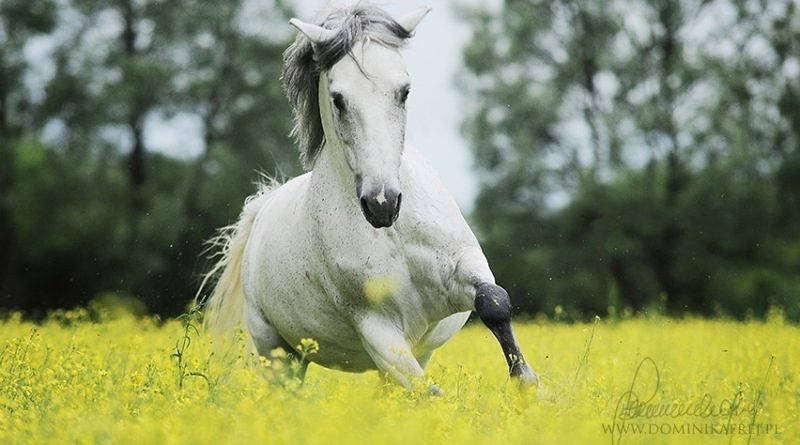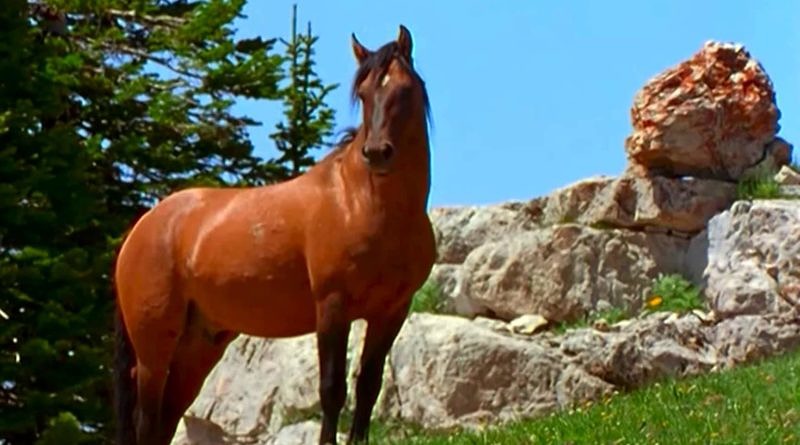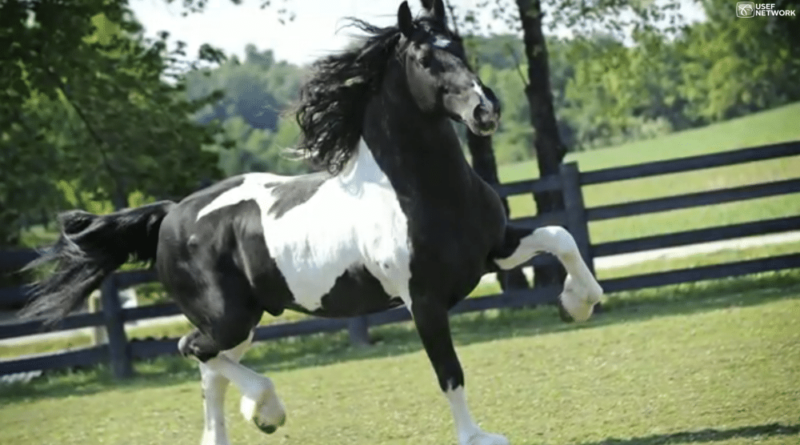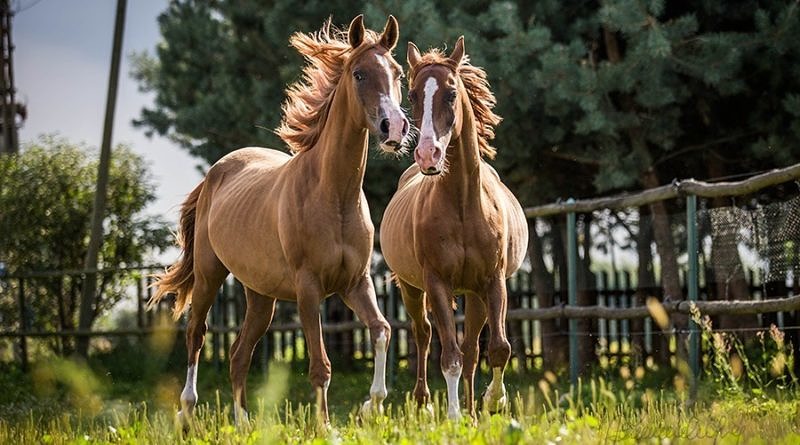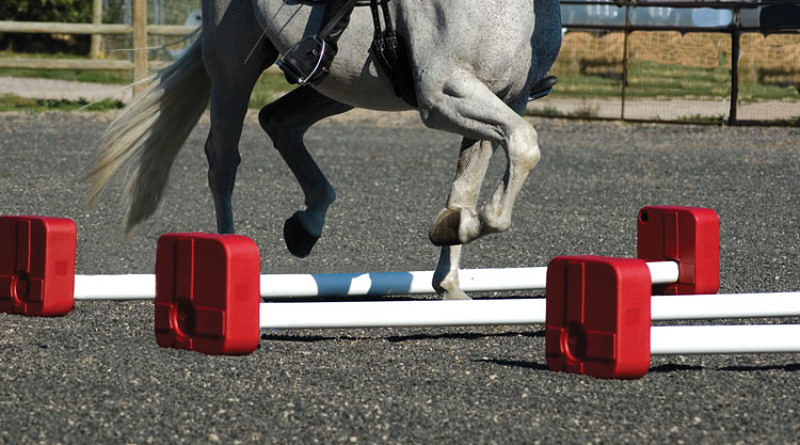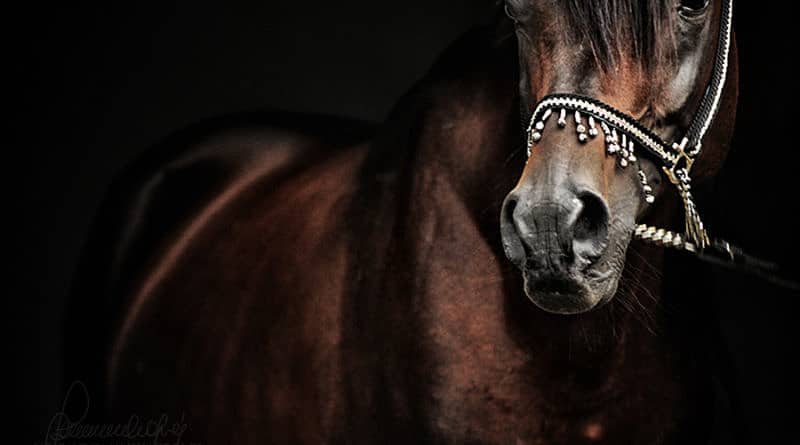Should I geld my colt?
For a lot of owners, the decision to geld their colt isn’t an easy one. Find out if gelding is the right thing for you and your horse.
For a lot of owners, the decision to geld their colt isn’t an easy one. Whether you have raised a foal that is now reaching maturity and is starting to show some stallion-like behaviour or you have acquired an older horse who is not gelded, you may wonder whether gelding is the right thing for you and your horse.
What if the horse loses his “spark”? How old should he be? Will it affect his growth? His work? What if I want to breed? All of these are valid questions and, luckily, most of them have fairly clear-cut answers!
Health
“Gelding” a horse is the process by which a stallion is castrated. This is done with the horse anaesthetised so that he doesn’t become distressed. Small incisions are made in the scrotum through which the testes and some of the spermatic cord can be removed. It is a quick procedure and in most cases can be done with only a local anaesthetic and the horse still standing, at home.
For a young, healthy horse with fully descended testicles, this procedure carries very minimal risk in itself and can in many cases be carried out very early in the foal’s life.
Complications are more commonly related to poor aftercare. It is important that freshly gelded horses are given appropriate amounts of exercise and have the incisions kept clean while they heal, which is why gelding is best done in the dryer months of the year. Aftercare is usually necessary for a couple of weeks after the procedure and during this time drainage and some swelling of the sheath are normal.
Complications are more likely to occur if a horse is a cryptorchid (where the testicles are not fully descended – a “rig”), which will require general anaesthesia. However, preliminary research suggests the condition might be inherited and it is not advisable to breed from such horses. In addition, a cryptorchid is potentially a danger to both humans and horses who come into contact with him as he will outwardly appear like a normal gelding but retain all stallion behaviours. To avoid harming both future handlers and equine herd mates, cryptorchids are best gelded as youngsters despite the small additional risk. And it is important that both testes are removed during the procedure. The practice of only removing the descended testicle (in cases where only one is retained) poses the same problems as not gelding in the first place.
Older horses are also at more risk from the gelding procedure because of the accumulation of blood vessels supplying the testes. This is something your vet should be able to advise you on. Horses can, however, be gelded at any age.
A gelded horse will produce less testosterone than an entire stallion. This leads to a life that is far more stress-free and is one of the biggest health benefits of gelding as stress is linked to a large number of other conditions. In addition, a gelded horse is less likely to injure himself or other horses.
Behavioural Effects

Individual stallions vary as much as any other horse in terms of their personality. However, in general terms, once a colt reaches sexual maturity, he will begin to display more and more stallion-like behaviours.
With correct training, handling issues can be mostly alleviated. However, even the best training will not change the fact that stallions have to be managed differently to geldings and mares. For instance, even the easiest stallion to handle should not be turned out with mares unless the intention is to breed. Even if the stallion is very polite, the mares may not be – injuries from mare-stallion confrontations are common and the potential vet bill for your stallion is going to be larger than the cost of gelding at an early age, which is usually a very cost-effective procedure.
If your stallion doesn’t get on with other horses, he may end up having to be stabled or kept alone. This isolation can lead to further behavioural issues. For instance, stallions who are kept alone may become aggressive, stabled stallions may develop stereotypies (weaving, wind-sucking etc), or they may become increasingly difficult – even dangerous – to handle. In addition, a horse that is kept in isolation will be more stressed, leading to a greater risk of health problems developing.
Stallions, like all horses, evolved to be social animals, running in bachelor herds or with mares, and if it is not possible to provide them with a social context like this, it may be unfair to keep them entire and much nicer for them, in the long run, to be gelded and able to live with other horses. Keeping stallions adjacent to other horses can certainly help to alleviate some isolation, but it’s not quite the same as the stallion being physically close to other horses as they would be in the wild.
Stallions are also more likely to be distracted under saddle or when working in-hand, making them that little bit more difficult to train and handle than a gelding. It is certainly not a good idea to keep your colt as a stallion – or buy a stallion – if you don’t already have experience handling mature studs.
Performance
A lot of people worry that their horse will lose his edge if he is gelded. He’ll no longer have “spark” and maybe will not develop properly.
Of course we all know that there are multitudes of very successful geldings. And in fact while stallions may develop more muscle than geldings, this can just as easily become a hindrance as a help, since excessive muscle can lead to stiffness. More muscle also burns more energy, making stallions more expensive to keep.
Geldings also tend to grow taller than stallions and if trying to produce young horses for competition, geldings are more cost-effective as well as more likely to find good homes.
In addition, while gelding a youngster early means that he will not develop a lot of stallion habits associated with breeding, geldings do not in fact stop producing testosterone. This is because horses also produce testosterone from a gland located near the kidney and in fact up to a quarter of geldings retain stallion characteristics. This is what has lead to some horses being considered “proud-cut”. In reality with modern procedures castration almost never leaves behind testicular tissue. Geldings continue to behave like normal male horses, just without the concerns brought on by the desire to breed. They don’t “lose their spark” – they are simply carefree.
Other Considerations
Some other considerations of keeping stallions are more subtle. For instance, stallions generally require more feed to maintain weight than geldings or mares. This means they are that little bit more costly to maintain, requiring a bit more food and of higher quality.
It is also a lot more difficult to find a livery yard that will allow stallions and these often cost more. Similarly, many people are not confident handling stallions, making it more difficult to find someone suitable to stand in for you over holidays or days when you are unwell.
A lot of people will also be more nervous riding out with you if you are riding a stallion. Even if he is perfectly under control under saddle, they may worry about what happens if you come off. Similarly, what if you need to find a sharer for your stallion or want to loan him out? Finding someone capable or responsible enough may be a real challenge. What if there is a mare in heat in a field along the bridleway? The potential risk from a one-off bad day is much greater than with a gelding or mare.
If there is any chance you might sell your horse or put him on full loan, you will have a much better chance of finding him a good home if he is a gelding. Most people are not looking for a stallion and won’t even consider one. Even if you intend to keep your horse forever, keep in mind that finding suitable retirement for a stallion will be difficult. And if something were to happen to you and your horse ended up at a rescue, he would likely be put down.
Breeding
No matter what decision you make, remember that your horse does not know the difference between being a stallion or gelding. He will not miss his testicles. Once gone, he will find himself gradually less concerned with mares and maintaining his ‘property’ and he will have a more relaxing life where he is free to socialise and live life as a horse.

In the wild, only a very small proportion of stallions ever father offspring – competition between males ensures only the best quality stallions succeed in keeping harems of mares and breeding with them. While the qualities we value may differ from those that benefit horses in the wild, similarly only a small proportion of stallions possess these qualities and we should be very selective in choosing the stallions we allow to breed.
In the vast majority of cases, the only real reason to keep a male horse entire is to breed from him. However, this is a decision that needs to be given a lot of thought. While many of us might be tempted to breed from our much-loved horses, it’s very important to be honest in assessing a horse’s potential as a breeding animal and carefully evaluate the possible costs to you, your horse and your horse’s offspring.
To start with, if we are honest with ourselves, our ‘perfect’ colt is probably not really perfect… No matter how much you love your horse, faults and all, he may not be a good breeding prospect. Ask yourself whether someone else would pay a stud fee to breed with your colt. Then ask yourself what reasons they might have for this. If your colt has impressive sought-after bloodlines, a proven performance record (if he is older) or truly exceptional conformation – or better yet all three – you may have a good case for keeping him as a stud. However in most cases this will not be the reality. That doesn’t make him any less wonderful or special. It just means that you have to appreciate him for all that he really is and can love him just as well as a gelding.
You may also want to consider the potential risks of breeding. It’s not unusual for stallions to be injured while breeding and the outcome can be costly, both in vet bills and liability (if the mare isn’t yours) and indeed in terms of your horse’s well-being. If you aspire to breed some day, consider that paying a stud fee to use someone else’s stallion may be a much cheaper option in the long run and carries fewer risks for you. Remember that if you want to you can usually track down a stud that is related to your gelding – a full brother, or even sire.
Breeding can not only be extremely costly if things go wrong, it can also make your stallion more difficult to handle as the experience can teach him new and unwanted behaviours. For instance stallions with experience of mounting mares may begin to display this behaviour in inappropriate contexts. The behaviour can even be directed at people or other objects – potentially becoming extremely dangerous. These sorts of behaviours are the last thing you want to be dealing with while raising a brand new foal.
In many parts of the world, keeping studs is the norm. But in the UK, and similarly in the USA, it isn’t. As a consequence, few people truly have the facilities to keep an intact stallion, even if they have both the funds and experience to do so. The result is that stallions, even with the best-intentioned owners, can end up living far poorer quality lives than their gelding counterparts simply because the facilities to keep them in a social context safely and cost-effectively do not exist. Now that we understand the biology of gelding and that it does not impact the horse’s mental health in a negative way but can, in fact, have many positive effects both physically and psychologically, we can more easily make the best decision for our horse’s well-being without feeling that we are depriving them of something. Remember that the vast majority of stallions would never mate in the wild – it is quite normal for a horse to never breed. As such, they are well-equipped to deal with this mentally. They are not, however, equipped to deal with isolation and a lack of physical interaction so being deprived of these can lead to potentially severe psychological problems and, in turn, behavioural issues.
Of course this is not to say that no one should own a stallion! Plenty of people responsibly own stallions and are able to give them a good life because they have given careful consideration to all the issues and made provisions for them. And plenty of stallions are by their nature placid and easy to handle and do not present many of the usual problems associated with stallions. All that we can do is try to make the best decisions for the individual horses in our lives, and having a clear idea of the potential consequences of keeping a stallion ungelded helps us make those decisions a little bit better.

